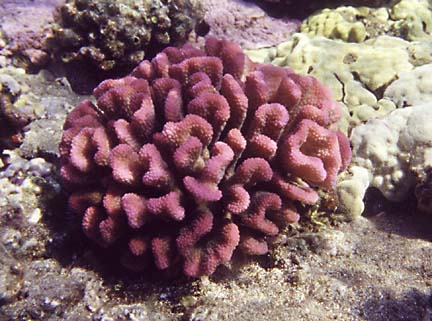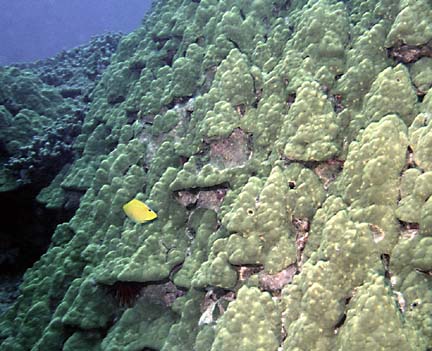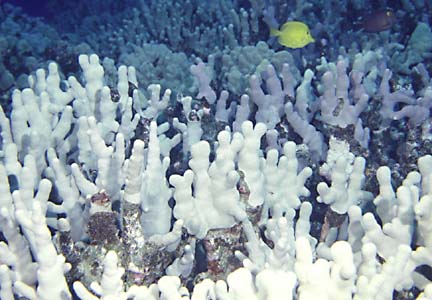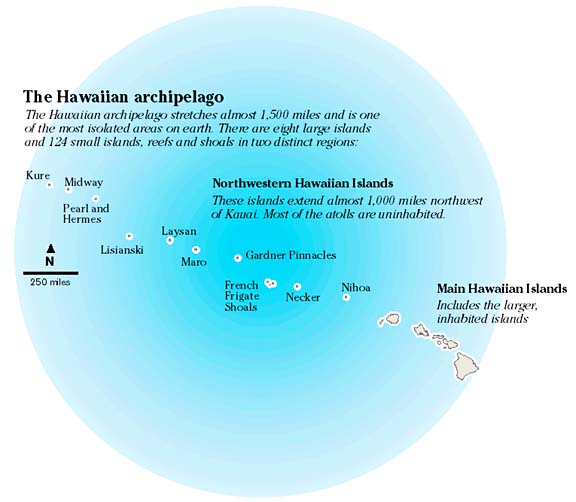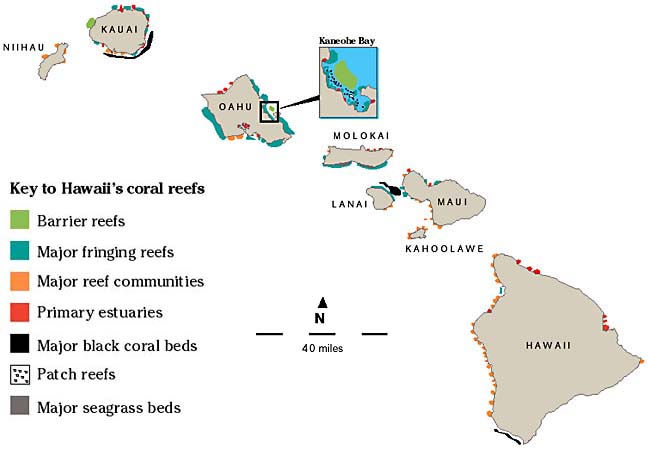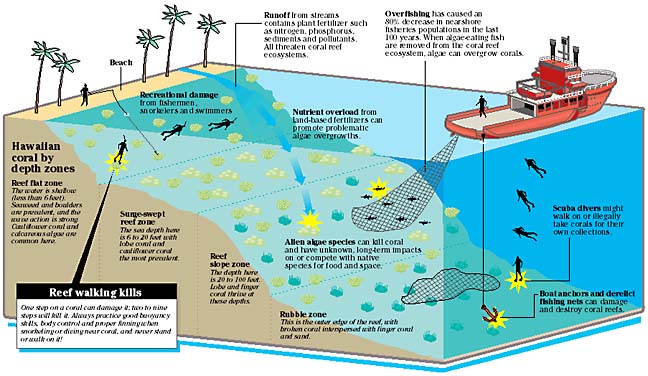
The coral connection
The Hawaiian archipelago has 410,000 acres of coral reef, more than the land mass of Oahu and more than half of all the coral reefs under U.S. jurisdiction. More than 5,000 known species of marine plants and animals live among these reefs, along with more than 340 alien marine species that are endangering Hawaii's endemic species. However, these alien predators are only one of the threats to our invaluable and cherished reefs.
» Common corals of Hawaii » Where reefs are located » Top threats to reefs
BACK TO TOP |
Common corals of Hawaii
CAULIFLOWER CORAL
Pocillopora meandrina
Cauliflower coral is sturdy and can tolerate strong water movement. It is found on shallow lava flows in heavy surf at depths up to 100 feet and dominates surge-swept reefs. It is sometimes called rose coral because it occasionally has a beautiful rose color, as shown here. Generally, however, it is brown or green.
LOBE CORAL
Porites lobata
Lobe coral is found in both shallow and deeper water growing low and encrusting in surge areas, and blossoming into large mounds in calmer water. This is an unusually large colony of lobe coral at Honaunau on the Kona Coast of the Big Island. A colony this size is probably hundreds of years old.
FINGER CORAL
Porites compressa
Finger coral is an endemic species that usually lives well below the surge zone at depths greater than 15 feet. It grows quickly and forms dense thickets, often dominating Hawaiian reefs on the lower reef slope. This is a typical bed of finger coral about 60 feet deep off the Kona coast of the Big Island.
BACK TO TOP |
Where coral reefs are located
There are seven major reef types found in the Hawaiian Islands: barrier reefs, major fringing reefs, major reef communities, primary estuaries, patch reefs, major seagrass beds and major black coral beds. The map below shows the approximate location of the different coral types.
BACK TO TOP |
The top threats to coral reefs
Coral reefs are an integral part of Hawaii, mostly in water less than 300 feet deep. Human activities, on land and in the ocean, are the greatest threats to an environment that is delicate and complex. Overfishing upsets the natural balance of the reef. Boat anchors and discarded fishing nets can damage coral. Dirt and pollutants can smother or weaken coral. Fertilizer runoff can cause an overgrowth of algae, particularly aggressive, non-native species that can kill coral and native limu. Even recreational fishermen, scuba divers, snorkelers and swimmers can "love the reef to death" by stepping on, touching or breaking coral and disturbing other reef plants and animals.
Sources: Hawaii Division of Aquatic Resources, Hawaii Coral Reef Initiative Research Program, U.S. Fish and Wildlife Service, U.S. Coral Reef Task Force, National Oceanic and Atmospheric Administration

